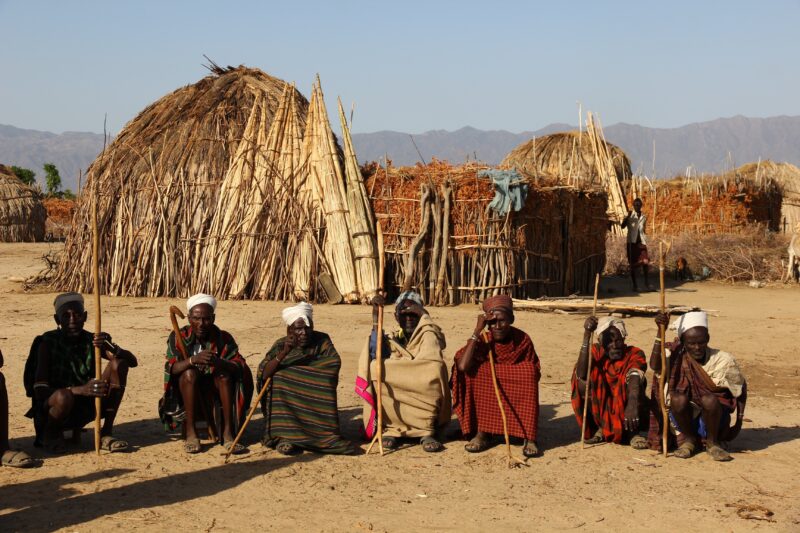Tamiru Jote, Melaku Tekle
Humanitarian and displacement policy, programming and scholarship have paid insufficient attention to displaced persons with disabilities, often resulting in their exclusion from communities and inadequate protection and services. At the same time, there have been several promising commitments and increasing recognition of the need to fill these gaps, for example through the second Global Disability Summit held in February 2022. In this context, this rapid review synthesises information on the experiences, protection needs, barriers to and opportunities for providing protection for refugees living with disabilities in Ethiopia, the second largest refugee hosting country in Africa, and identifies key gaps and future priorities for policy and programming.
In line with evolving scholarship, policy and practice on disability inclusion in displacement contexts, the review takes an intersectional approach, recognising that persons with disabilities are not a homogeneous group. Disabilities are diverse, may be more or less ‘visible’, and are experienced differently by different people. A range of factors (such as refugee status, camp or urban setting, gender, age, ethnicity, religion) and barriers (such as attitudinal, individual, institutional and environmental) overlap to shape experiences and particular protection needs. This approach is also necessary to understand what enablers exist in a particular context and how these may be supported and adapted as needed. Based on this approach, the following key findings have emerged:
- Individual, institutional, attitudinal and environmental barriers shape diverse experiences for displaced persons with disabilities in Ethiopia. In terms of individual barriers, this study has revealed a hierarchy in service provision for refugees with disabilities, with persons with physical disabilities benefiting more readily than those with other, less visible types of disability. Age and gender also shape different experiences, with children and older women facing particular challenges.
- Limited funding and human resources are the major institutional barriers to providing satisfactory services for refugees with disabilities. Most organisations interviewed did not include allocations for disability mainstreaming in their line budgets, so, while regional, country and organisational-level policies and frameworks may exist, they are not fully implemented.
- Most respondents stated that there are negative attitudes and social stigma towards persons with disabilities; these attitudinal barriers also intersect with other attitudes about age and gender roles. Attitudinal barriers were identified among community members and staff.
- Environmental barriers differ in camp and urban contexts; however, in both, refugees with disabilities in Ethiopia are constrained from participating fully in their communities.
Despite the significant barriers identified in this report, there are also several key opportunities for greater inclusion of refugees with disabilities within displacement-affected communities in Ethiopia. The Constitution of the Federal Democratic Republic of Ethiopia, the UN Convention on the Rights of Persons with Disabilities (UNCRPD), and the Comprehensive Refugee Response Framework are all opportunities to improve inclusion of refugees with disabilities in Ethiopia. To this end, the following
recommendations are made:
- Policies and legislation are only as effective as their implementation, and much more needs to be done to address the rights of people living with disabilities in social policy, including refugee and humanitarian support policy. Adequate budgeting and training are needed to ensure that assistance on the ground is as inclusive as possible.
- Training in capacity building is needed for humanitarian staff and management on how best to include refugees with disabilities in mainstream programmes and in existing international and national polices and legal frameworks such as UNCRPD and the Sustainable Development Goals (SDGs).
- Capacity-building training on their rights and existing policy frameworks is needed for refugees with disabilities and their representative organisations (OPDs).
- Advocacy to increase awareness and understanding within humanitarian organisations, government departments, civil society and the population at large about the needs and capabilities of persons living with disabilities and the needs of refugees with disabilities should be promoted.
- Persons with disabilities must be involved in designing, delivering and evaluating programmes aimed at supporting them. This must be adopted by policy makers to engage refugees with disabilities and their representatives in the planning, implementation and evaluation of programmes.
- The international community needs to provide aid specifically for refugees with disabilities in order to build more accessible camps (where camps are unavoidable) and to help refugees move into community settings where feasible, with adequate support. As part of this support, it is advisable to strengthen the out-of-camp programme (OCP) for refugees currently being piloted in Ethiopia.
- Persons with disabilities should be involved in the planning and execution of all humanitarian interventions. Disability budgeting should be introduced in humanitarian programmes to ensure that all assistance is accessible to people living with disabilities.
- There is a significant lack of empirical information about internally displaced persons living with disabilities in Ethiopia. Thus, it is strongly recommended that a comprehensive study on the lived experiences of internally displaced persons (IDPs) with disabilities in the country be undertaken by specialist researchers as soon as possible. Moreover, rigorous studies should be specifically conducted on refugee women with disabilities, as this segment of the refugee community is more susceptible to triple discrimination on the basis of being women, persons with disabilities and among the poorest of the poor.
You will need a PDF reader such as Adobe Acrobat (downloadable from Adobe) to view PDF file(s).
